Celebrate St. Patrick’s Day in NYC 2025
Discover 10 ways to celebrate St. Patrick's Day in NYC this year, from eye-opening tours to Irish treats!


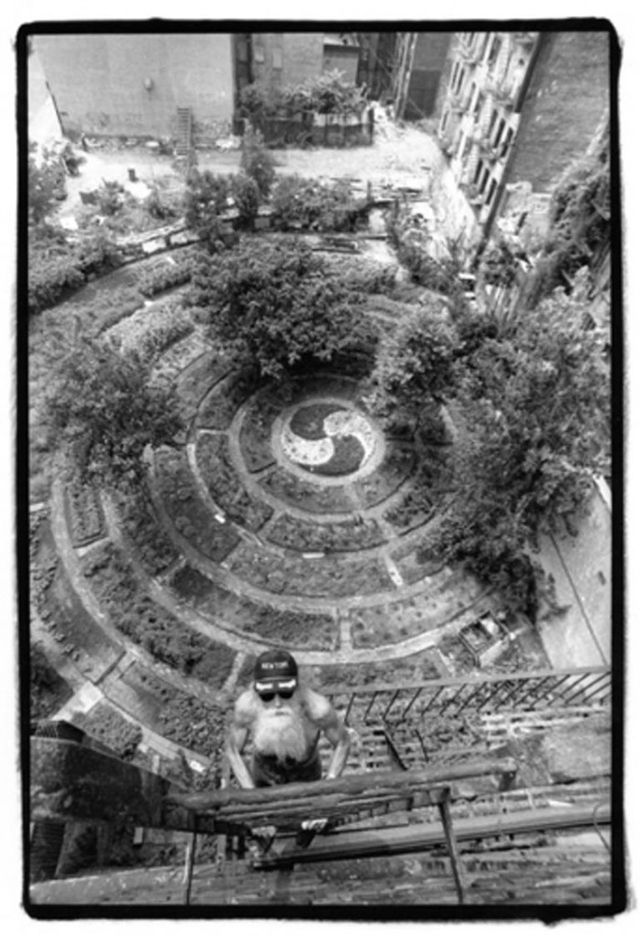
Adam’s House in Paradise in the Lower East Side. Photo by Brian Patrick O’Donoghu courtesy Storefront for Art and Architecture.
“Its significance is underlined by the history of community design activism in the 1960’s, by the “green” movements, by the socio-political opposition to overscaled housing projects; and now, by the issue of gentrification in the East Village and the Lower East Side, and by the artist community which has become the inevitable staple in this process in New York City”
On September 14, the New York Times reported the passing of Adam Purple, an eccentric New York-based environmentalist and gardener, at the age 84. Early Storefront followers might know him through the 1984 exhibition Adam’s House In Paradise, a public campaign to preserve Purple’s remarkable and elaborately designed community garden, which he created in the rubble of Lower East Side abandoned lots and called the Garden of Eden. “Hope in a territory of poverty and drugs,” as Storefront’s co-founder Glenn Weiss referred to it, this 15,000 sq. ft. earthwork was featured in several publications, including National Geographic (September, 1984), London Art Monthly (October, 1984), and Lucy Lippard’s article Gardens: Some Metaphors for a Public Art in Art in America (November, 1981).
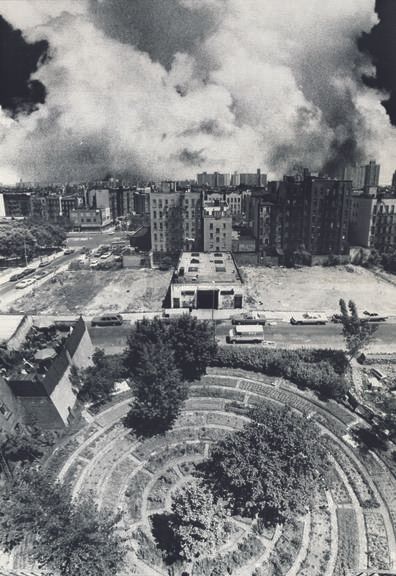
Photo by Brian Patrick O’Donoghu courtesy Storefront for Art and Architecture.
In January, 1986 NYCHA announced plans to demolish the garden to make way for a public housing project on the site, prompting a two-front community initiative: Storefront’s exhibition that invited architects from around the world to propose alternative designs that would integrate the garden into the Housing Authority’s approved plan, and a legal case against the development brought by the Volunteer Lawyers for the Arts.
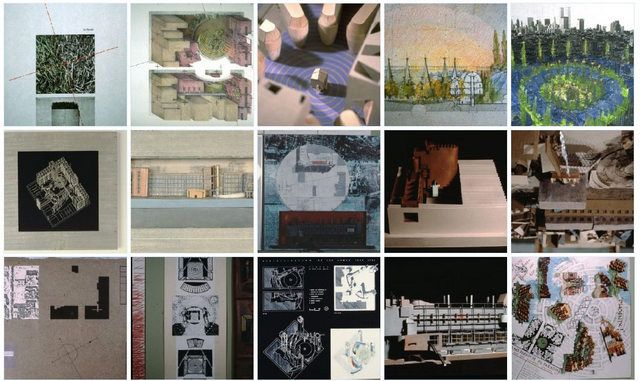
More than 30 architects, including Lebbeus Woods, Neil Denari, Shin Takamatsu, Diller+Scofidio, Imre Makovicz, Dan Coma, BA BA ARC and others, submitted proposals to the exhibition. Spanning conceptual sketches to extensive designs, these submissions explored strategies that positioned the garden as a public amenity with the potential to improve the city’s public housing plan for the site.
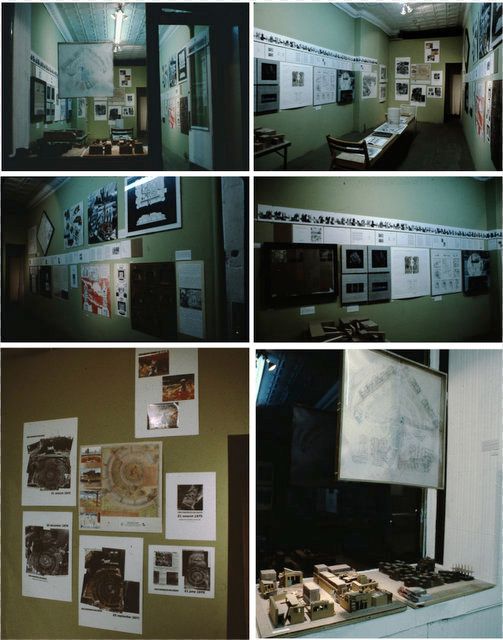
Installation View at Storefront for Art and Architecture
Storefront also created its own site proposal which relocated two buildings from NYCHA’s plan from the Garden of Eden site to the other side of the street:

Image: Existing Site Plan (left), Housing Authority Plan (center), and Storefront Plan (right)
Despite these efforts, the garden was demolished as planned in 1986. However, as one of Storefront’s first exhibitions to engage the politics of city planning, it established the organization’s commitment to alternative art and architecture practices as inseparable from
Here are the submissions received for the Storefront for Art and Architecture competition, with accompanying descriptions (when available):
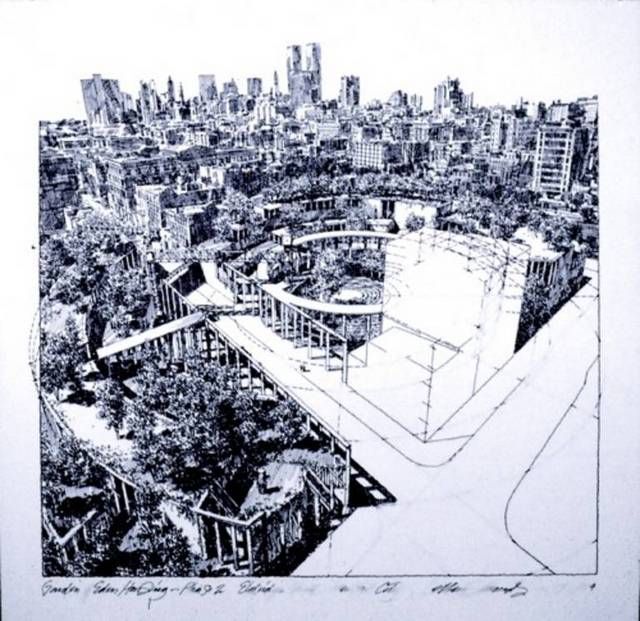
“The Cultivation of gardens within dense urban settlements helps to establish a healthy community of planetary life-forms and processes. The same is true of forests, which are an aspect of wilderness brought to the city. An urban terrain of terraced houses, constructed of reinforced concrete, with soil roofs three to eight feet in thickness will, in the proposed design, form a new forest floor. The Garden of Eden, at the center of an expanded complex of earth houses and urban forest, remains a unique preserve. As a point of origin, it serves as a reference and resource for future growth.”
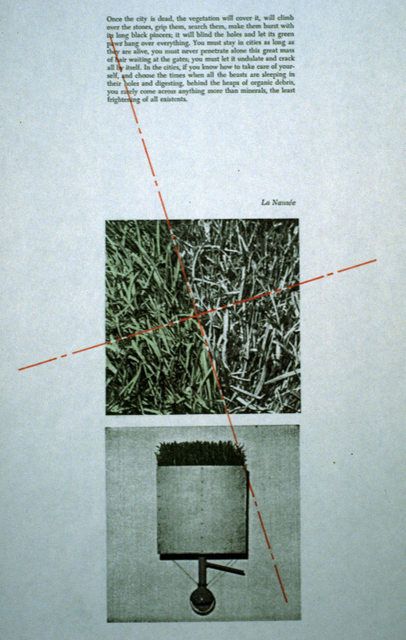
“Once the city is dead, the vegetation will cover it, will climb over the stones, grip them, search them, make them burst with its long black pincers; it will blind the holes and let its green paws hang over everything. You must stay in cities as long as they are alive, you must never penetrate along this great mass of hair waiting at the gates; you must let it undulate and crack all by itself. In the cities, if you know how to take care of yourself, and choose the times when all the beasts are sleeping in their holes and digesting, behind the heaps of organic debris, you rarely come across anything more than minerals, the least frightening of all existents”.
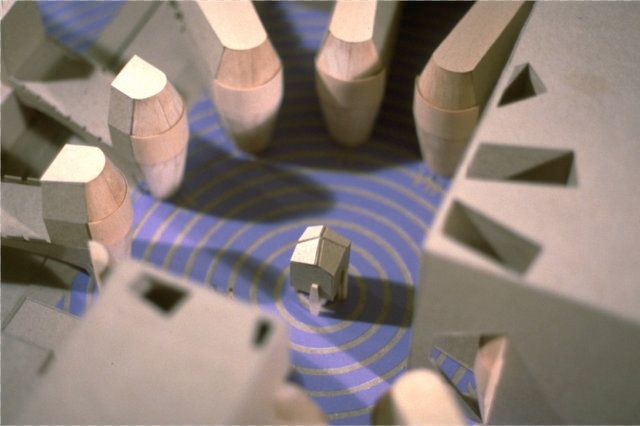
“At this moment there was a terrific explosion. It was New York… and, just as it is said that no two men can really know what each is thinking of, what either sees when he speaks of “red” or “blue”, so can no man ever know just what another means when he tells about the city that he sees. No man can be certain he’s seen the city as it is because, in the hairbreadth of that instant recognition, a whole new city is composed, made out of sense but shaped and colored and unalterable from all the he has felt and thought and dreamed about before…”
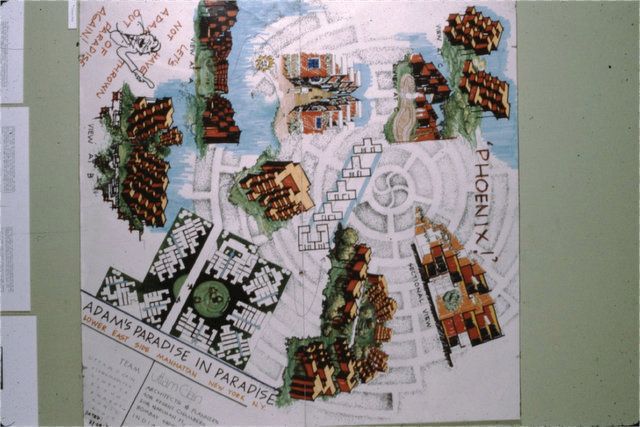
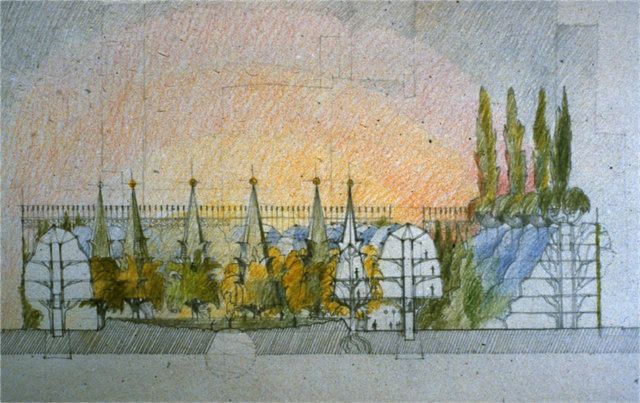
A section through a circular housing structure with The Garden of Eden at its center.
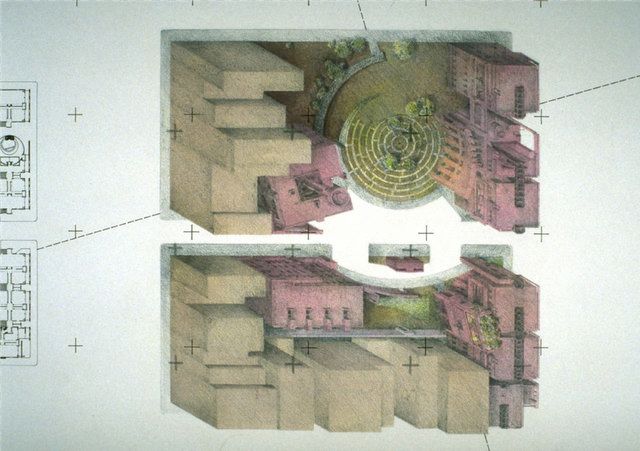
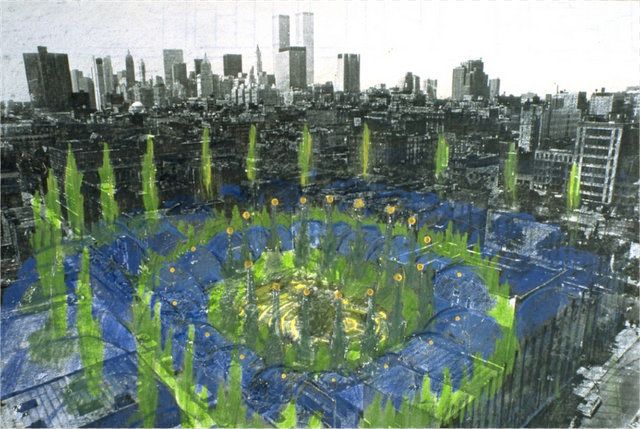
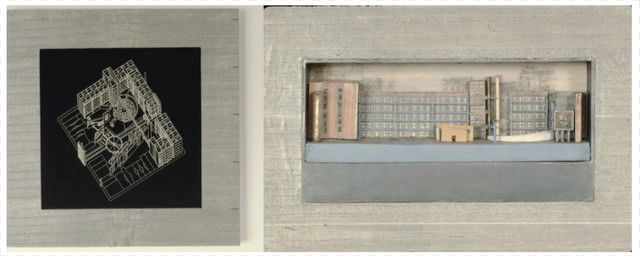
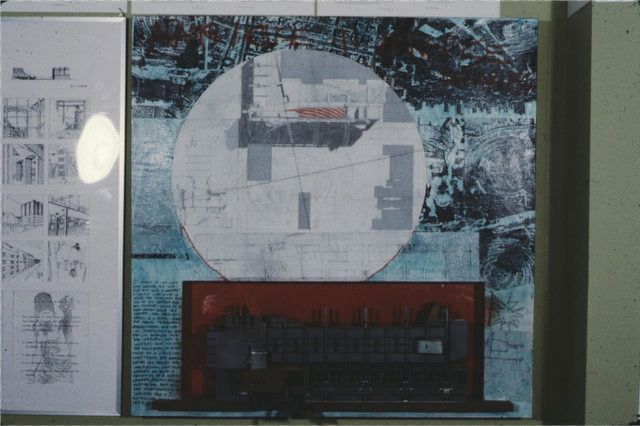
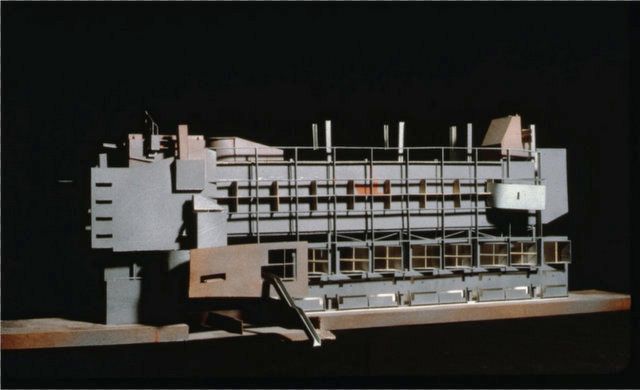
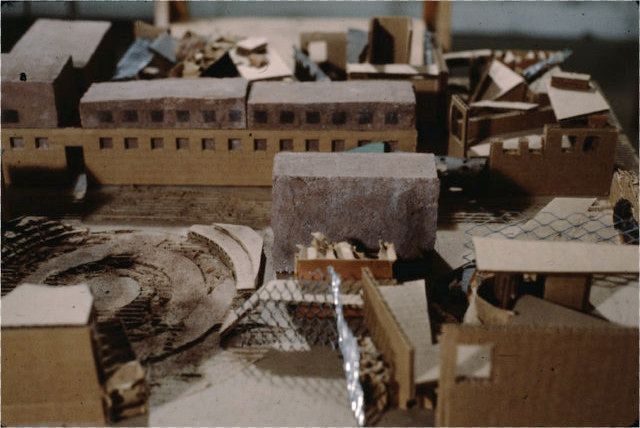
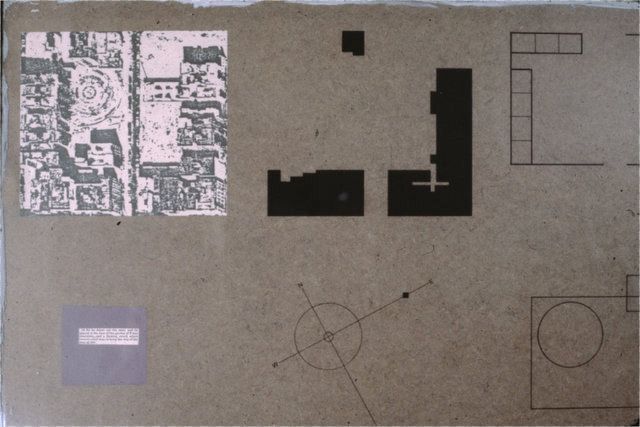
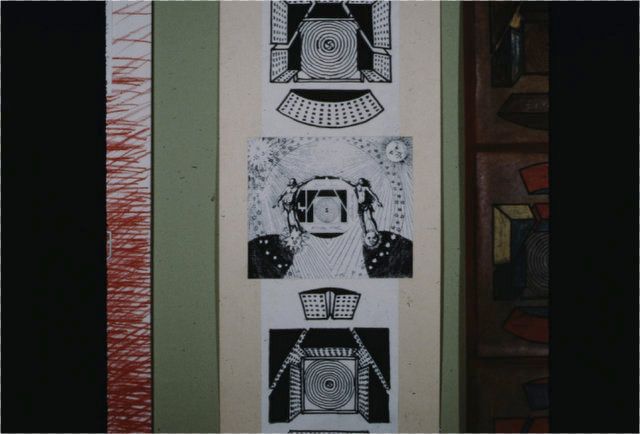
In Modern times, we have often chosen the violently centrifugal asymmetry as a sign of freedom. We have passionately run to the unlimited horizons of freedom where now we only find the dull gap of the too-earthy-lawless. An unavoidable discontent faces us now. The art of our days evinces an acute need for certitude, for peace, for reintegration. A corresponding need for centrality accompanied it at the formal level, a need for the rigid, for the lasting. The axes, the emphasizing symmetry haranguing Pollock-like chaotic structures are to fix, to attach the human wreck to the infinite, rejected by modern man’s awful ignorance as too coercive. Willing or not, life is governed by cosmic order, the order which like a cobweb nets our insignificant accidents, disorder, asymmetry, our earthly unbalance. The great universal balance is the sum of small but uncountable individual abilities.
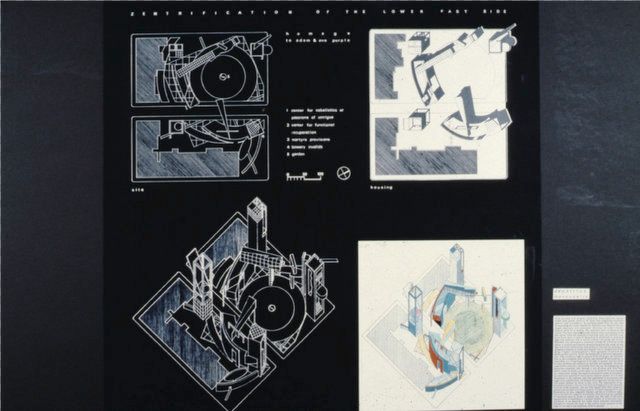
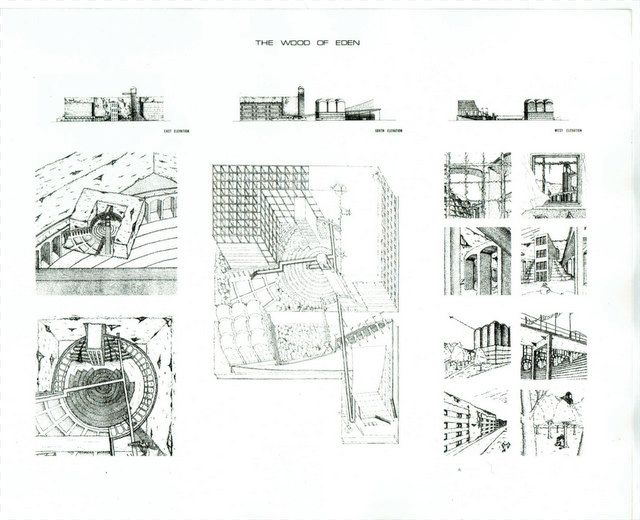
This planning is only based on the following romantic concepts for lack of concrete visual informations or the background of political informations:
Next, see more conceptual competitions from the Storefront for Art and Architecture.
Subscribe to our newsletter